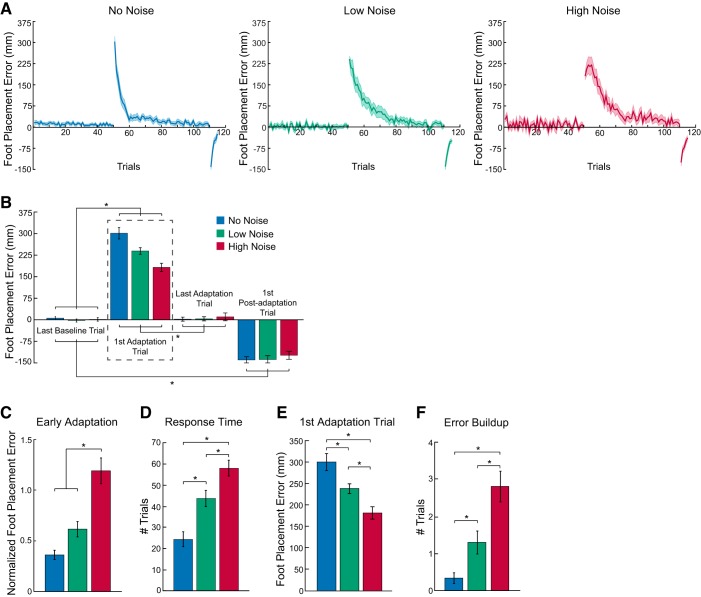Fig. 3.
Increasing measurement uncertainty leads to decreasing first adaptation trial errors, decreasing adaptation rates, and increasing error buildup in response to a consistent prism shift. A: group mean (±SE) medial-lateral foot placement error across the no-noise (blue), low-noise (green), and high-noise (red) conditions. The direction of the mean prism shift during the adaptation phases rotated between the 3 noise conditions depending on the subject. Thus we changed the sign of the errors during leftward prism shift conditions for proper comparison with the rightward prism shift conditions for the purpose of our analyses. B: group mean (±SE) medial-lateral foot placement error in the probe trials across noise conditions. The dashed box highlights the first adaptation trial effects, in which significant differences between noise conditions are shown in more detail in E. C: group mean (±SE) medial-lateral foot placement error in early adaptation (average of trials 2–9, normalized by first adaptation trial error) across noise conditions. D: group mean (±SE) response time for each noise condition. F: group mean (±SE) error buildup. *P < 0.05, significant post hoc test effects.

